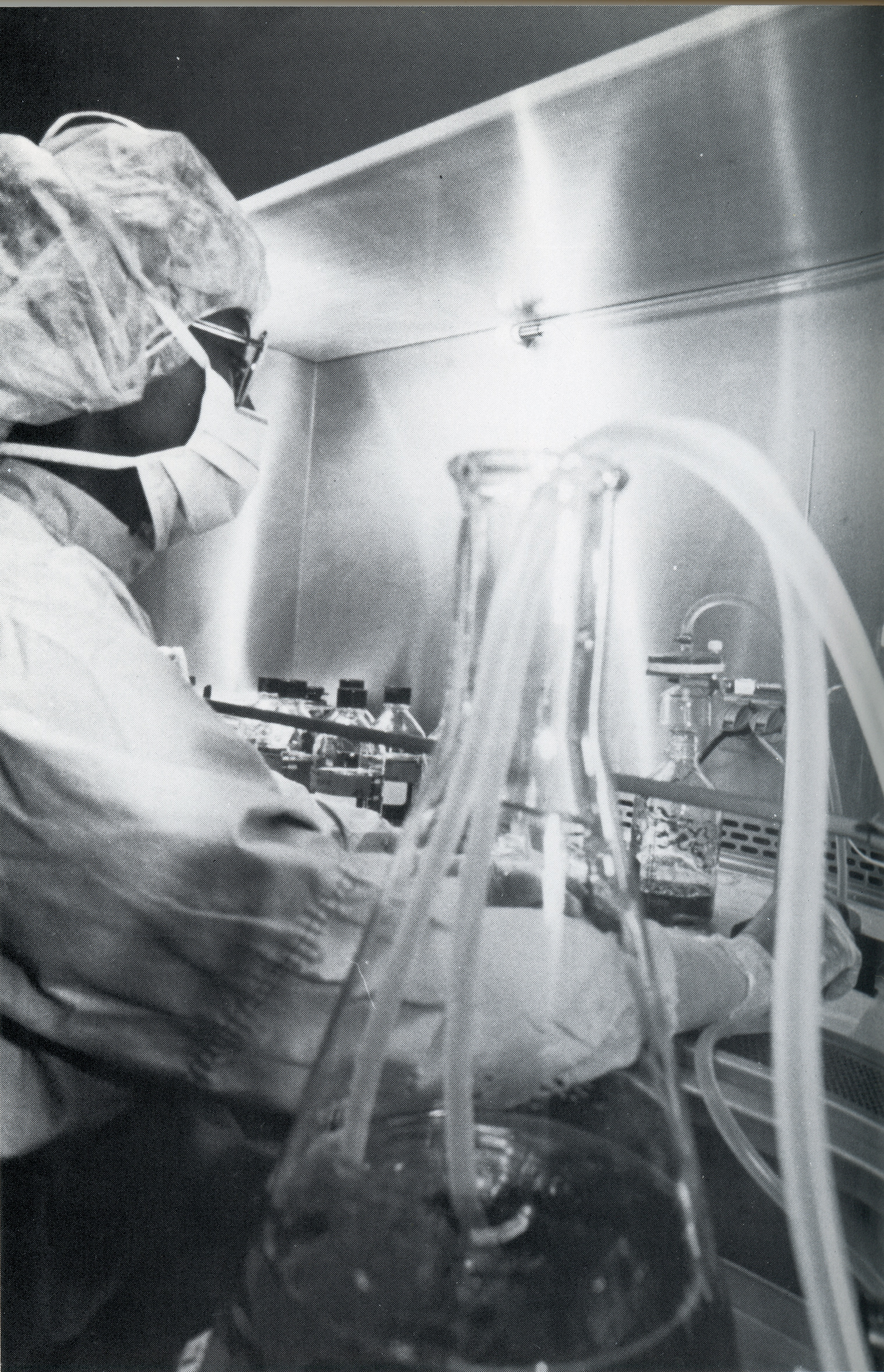Southern Research scientists joined the front lines in the battle against HIV/AIDS in 1986, not long after the deadly viral infection emerged as a terrifying new public health threat in the United States.

Three decades later, the Birmingham non-profit organization is deeply involved in a broad-based initiative to find a cure for HIV infection, which the World Health Organization has blamed for 35 million deaths globally.
Scientists at Southern Research’s research center in Frederick, Maryland, are working to develop and standardize testing assays that will help researchers detect the hidden remnants of HIV in patients successfully treated with antiretroviral medications.
These hiding spots are called “latent reservoirs,” and they allow the virus to lurk unseen for years even though blood tests no longer show traces of HIV. Because the virus is not eradicated from these cellular havens, it can spring back into action when drugs are stopped intentionally or unintentionally, triggering a full-blown infection.
“In the U.S. and other developed countries, because of the availability of highly effective antiviral therapies, the virus is completely suppressed, and HIV-infected people are leading essentially normal lives. However, they still harbor the virus,” said Mike Murray, Ph.D., director of government business development for Southern Research’s Drug Development division in Frederick.
“The next step in the fight against AIDS is the cure,” he added. “The question is how do you go in and get rid of the virus completely?”

To support researchers searching for that cure, Southern Research is working to expand access to what’s called the Quantitative Viral Outgrowth Assay (QVOA). Though expensive and labor intensive, the QVOA is considered the most effective testing platform for HIV/AIDS researchers trying to evaluate the latent viral reservoir.
Southern Research is also working with experts in HIV latency to develop alternative assays that are quicker, more sensitive and less costly.
TARGETING VIRAL THREATS
Southern Research’s current HIV/AIDS work builds on decades of experience in the field of viral threats.
The organization’s virus research program got started in the 1950s, and early work focused on herpesviruses, poxviruses and mosquito-borne viruses such as Yellow Fever. In the 1970s, Southern Research virologists evaluated potential drugs against the Gross murine leukemia virus, a retrovirus that causes cancer in mice.
In 1986, the organization’s Microbiology-Virology department began work on a U.S. Army contract to study antiviral activity of compounds against exotic RNA viruses.
That same year, the Army and the National Institutes of Health (NIH) asked Southern Research to evaluate compounds for the treatment of AIDS, caused by the human immunodeficiency virus, a retrovirus that has RNA as its genetic material.
Before long, Southern Research was testing 1,500 compounds a year, making it one of the first laboratories outside the NIH evaluating AIDS compounds on a major scale.
The earlier testing program on the Gross leukemia virus, along with the development of new assays for large-scale screening, prepared Southern Research to greatly expand evaluation of potential HIV/AIDS compounds. Its labs were eventually testing large numbers of synthetic chemical compounds advanced for screening against the virus, resulting in around 20,000 tests annually for a decade.
Southern Research’s anti-HIV screening program became the largest in the country, and many of the AIDS treatments now on the market were evaluated through its program.
SEEKING NOVEL TREATMENTS

Over the years, Southern Research’s efforts against HIV/AIDS have moved forward on several fronts, based on longstanding partnerships with the National Institutes of Health and other government agencies.
In 2014, the organization received a $24 million contract from the Division of AIDS (DAIDS) at NIH’s National Institute of Allergy and Infectious Diseases (NIAID) to provide drug discovery and development services that could lead to potential new drugs for the treatment and prevention of HIV infection.
Using high throughput screening, an automated process that rapidly assesses the activity of drug-like compounds, and preclinical studies, Southern Research scientists are seeking to identify and develop novel antiretroviral molecules against HIV.
Their focus is on therapeutics for novel viral targets not inhibited by current therapies and topical microbicides, which could neutralize the virus prior to infection.
The latent reservoir work now being done for DAIDS-NIAID puts Southern Research back on the front lines in the effort to prevent, treat, and find a cure for HIV infection, which produces around 40,000 new cases in the U.S. each year.
“We are excited to be contributing to the HIV Cure Initiative,” said Murray, who previously headed infectious disease research for Southern Research in Frederick.
This is Part Eight of a series looking at the history of Southern Research.
- Part One: A visionary creates a lab to lift industry and a region
- Part Two: Improving peanut butter and other early projects
- Part Three: Ben May’s gift launches a cancer program
- Part Four: ‘Boss Kettering’ provides key early support
- Part Five: Helping Apollo spacecraft beat fiery re-entry
- Part Six: Labs spin out new fabrics and capabilities
- Part Seven: Engineers assist ‘Return to Flight’ Shuttle missions